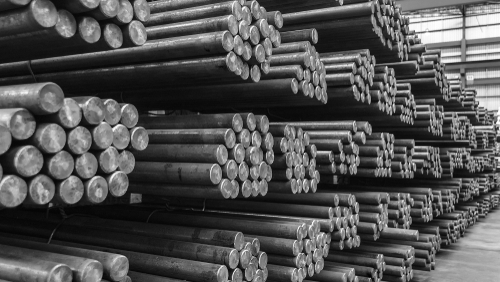
Nerves of Steel: How leveraging demand could decarbonise the industry
IIGCC’s new vision to decarbonise the steel industry puts the spotlight on the purchasers
Steel is the world’s most widely used material. The steel industry employs over 6 million individuals and accounts for roughly 3.8% of global GDP in value-added terms.
However, decarbonising steel is a monumental hurdle. At 7% of global greenhouse gas emissions, it is the most emissions-intensive manufacturing industry. Scalable alternatives are few and far between and demand is set to soar by 30% by 2050.
Hitherto, decarbonising steel production has riled on advocating a common prescription: renewable energy inputs, carbon capture, utilisation and storage (CCUS), recycling scraps and hydrogen.
For instance, South Korean manufacturer POSCO, the world’s fifth largest steelmaker, has a net zero by 2050 plan that relies heavily on “hydrogen reduction steelmaking technology”.
As engagement efforts at individual companies continue, investors have turned their attention to another set of players in the steel value chain: the purchasers.
The Institutional Investors Group on Climate Change (IIGCC) has launched a “steel purchaser framework”, a set of recommendations on what steel to buy, when and why.
IIGCC is an investor coalition of some weight. Its membership covers over 400 asset owners and managers across 27 countries with a collective €65tn in assets under management.
This framework aims to provide support and enable investors and relevant stakeholders to assess, compare and track steel purchasing commitments
Demand Signals
At the heart of IIGCC’s new plan are market demand signals that hinge on purchasing commitments i.e. targets and strategies that steel buyers are expected to publicly agree to.
“This framework aims to provide support and enable investors and relevant stakeholders to assess, compare and track steel purchasing commitments”, says the IIGCC.
IIGCC’s plan is to leverage steel’s extensive demand base. Purchasing commitments could cover companies in infrastructure, heavy manufacturing, automobiles, shipping, aviation and consumer goods.
There are four components to the IIGCC’s demand signal:
First, companies must commit to meeting 100% of their demand through steel that has net zero emissions intensity by 2050. This is the long-term demand signal.
Second, in the short-term, buyers should choose their suppliers strategically. Steel is a globally contested market. The world’s top 50 steel producers are scattered across China, Japan, India, South Korea, USA, Brazil and Argentina.
The IIGCC’s framework asks purchasers to increase the proportion of suppliers with “externally verified 2050 net zero commitments consistent with 1.5° C” by 2030.
Third, by 2030 purchasers must publicly disclose targets for low-emissions primary and secondary steel procurement that are aligned with global benchmarks.
The International Energy Agency and SteelZero, a global corporate alliance to decarbonise steel are the two recommended sources for emissions intensity benchmarks.
SteelZero and IIGCC have a similar call to arms:
“By harnessing collective purchasing power and influence, we’re sending a strong demand signal to shift global markets and policies towards responsible production and sourcing of steel”, the SteelZero vision reads.
Steelmakers could attempt to pass the additional costs onto customers by charging a premium for certified green steel
The cost
Ultimately, the success of IIGCC’s demand signal plan will depend on its impact on the commercial viability of low-emission steel production. In theory, demand signals should incentivise investments and capital flows into expensive emissions reduction technologies.
However, decarbonising steel remains a costly endeavour. For example, the IEA estimates suggest hydrogen-based steel production could shoot up cost of production by as much as 60%.
A 2021 study on low emission steel by global investor coalition Climate Action 100+ includes a sombre prediction:
“Steelmakers could attempt to pass the additional costs onto customers by charging a premium for certified green steel”, the report concludes.
Purchasing commitments will undoubtedly involve significant financial implications. Do purchasers have financial nerves of steel to absorb the green premium? The jury is still out.




